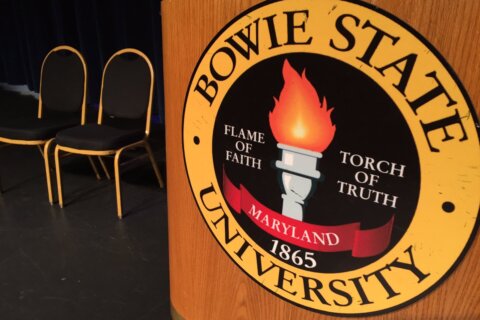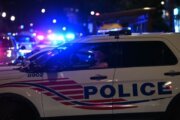Prince George’s County, Maryland, would move on Monday into Phase Two of the lifting of safety restrictions in the wake of the COVID-19 pandemic, County Executive Angela Alsobrooks announced.
“We are moving into Phase Two of reopening,” Alsobrooks said at a briefing Thursday morning, saying that “we have continued to see a decline” in cases, hospitalizations and deaths.
She laid out some of the parameters of the next phase:
- Retail stores can open for in-store sales with safeguards and capacity limits of five people per 1,000 square feet.
- Barbershops and hair services can operate at 50% capacity. Workers have to wear personal protective equipment, and customers must wear masks.
- Nail salons and other personal services can open with a limit of one customer per 200 square feet.
- Restaurants can have outdoor and indoor seating at 50% capacity. There can be no more than 50 people in outdoor seating. Indoors, restaurants are limited to 50% capacity; no more than six people can be at a table; and tables must be at least 6 feet apart. Workers must be screened and wear face coverings, and hand sanitizer must be available.
- Houses of worship can open at 25% capacity.
- Child care will expand for essential workers and those returning to work.
- Youth sports can resume with a maximum of nine athletes and one coach at a time.
- Outdoor community pools can open at 25% capacity and with social distancing required. Indoor pools and gyms are still closed.
- Automated car washes can open; customers have to stay inside their cars.
“Prince George’s County is ready to move into Phase Two,” Dr. Ernest Carter said, but the deputy health officer added that people still needed to wear masks in public, including in stores.
“We are still safer at home,” Carter said. “We have to stay disciplined.”
“COVID-19 is still very much a part of our community,” Alsobrooks said. “We will not be able to return to the way that things were. … We are not out of the woods.”
REOPENING PLANS AROUND THE REGION
- Northam: Northern Va. to enter Phase Two on Friday
- Most of Md. to resume indoor dining with restrictions on Friday
- Prince George’s Co. to enter Phase Two on Monday
- Elrich: Montgomery Co. likely to enter Phase Two ‘sometime next week’
- DC not ready for Phase Two yet
Improving numbers
Alsobrooks laid out some of the numbers that have allowed the county to move ahead.
In the past week, she said, the county has seen 1,432 new cases, down from a peak of 2,370 the week of April 26. Deaths in the same two periods have gone from 70 per week to 50 total.
“This is still way too high,” Alsobrooks said.
In the week of May 9, there were 262 hospitalizations; since June 1, that number has been below 150.
Test positivity has gone from a high of 43.1% the week of April 19 to 14.1% last week.
Still, she acknowledged that for a lot of people, both patients and health care workers, the problems are far from over.
“We continue to thank the people who are in the midst of this fight,” Alsobrooks said.
- Sign up for WTOP alerts
- Latest coronavirus test results in DC, Maryland and Virginia
- Coronavirus FAQ: What you need to know
- Coronavirus resources: Get and give help in DC, Maryland and Virginia
- Elrich: Montgomery County likely to enter Phase Two ‘sometime next week’
- DC not ready for Phase Two despite coronavirus progress; contact tracing ramps up
- Long list of precautions, but Northern Va. day care centers to open Friday
Looking for more information? D.C., Maryland and Virginia are each releasing more data every day. Visit their official sites here: Virginia | Maryland | D.C.
‘Two pandemics’
Alsobrooks began the briefing by commenting on the recent protests and the problems with policing that have underlain them.
“We are in the midst of two pandemics,” she said – COVID-19 and racism, “which started hundreds of years ago.”
She recalled that her own grandfather, J.C. James, was murdered by a deputy in South Carolina on July 4, 1956.
Alsobrooks called the current moment “time for us to re-imagine the relationship … between African Americans and the police,” adding that she didn’t see “an either/or” situation.
“The reforms that are necessary can be accomplished and … we have a right to be safe.”
She also called for the kind of reforms that would go beyond the police and “change the very fabric of America,” saying that the COVID-19 pandemic “is not disconnected” from structural and inequities; it “ripped the Band-Aid off … and helped us to see some of the inequalities.”
Reforms “won’t be easy,” but “if we leave this moment and the only conversation we have is about African Americans and the police, we will have missed it,” Alsobrooks said.
Editor’s note: This story has been updated to correct the information regarding restaurants.








